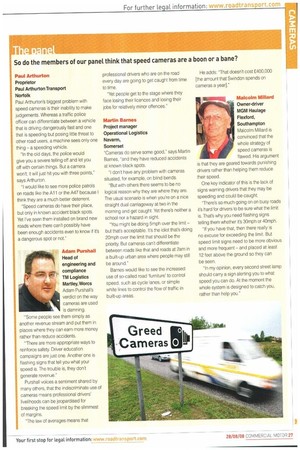Martin Barnes Project manager Operational Logistics Navarm, Somerset "Cameras do
Page 27

If you've noticed an error in this article please click here to report it so we can fix it.
serve some good," says Martin Barnes, "and they have reduced accidents at known black spots.
"1 don't have any problem with cameras situated, for example, on blind bends.
"But with others there seems to be no logical reason why they are where they are. The usual scenario is when you're on a nice straight dual carriageway at two in the morning and get caught. Yet there's neither a school nor a hazard in sight.
"You might be doing 5mph over the limit — but that's acceptable. It's the idiot that's doing 20mph over the limit that should be the priority. But cameras can't differentiate between roads like that and roads at 2am in a built-up urban area where people may still be around."
Barnes would like to see the increased use of so-called road 'furniture' to control speed, such as cycle lanes, or simple white lines to control the flow of traffic in built-up areas. He adds: "That doesn't cost £400,000 [the amount that Swindon spends on cameras a year]."




































































































































































